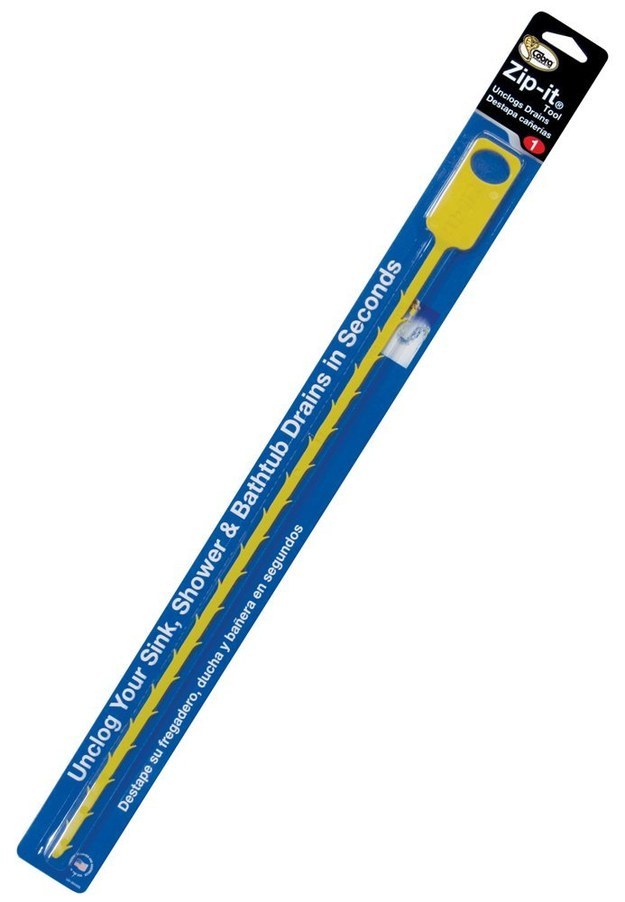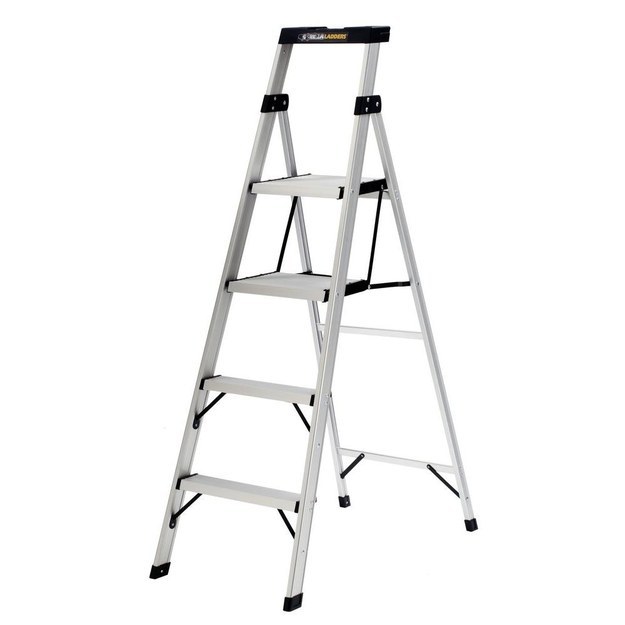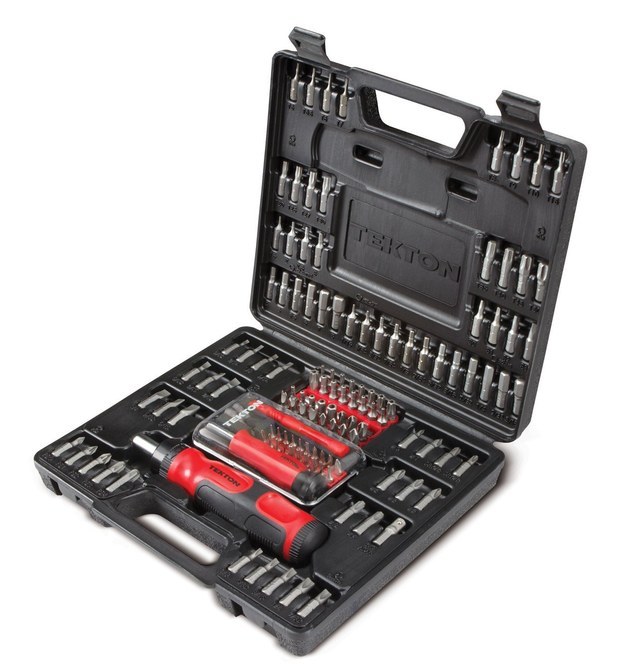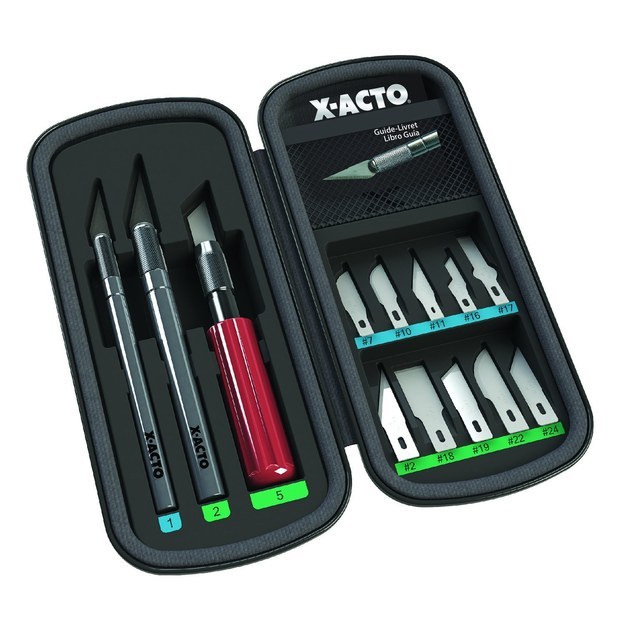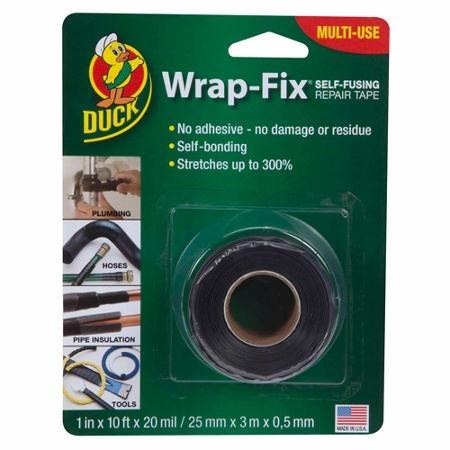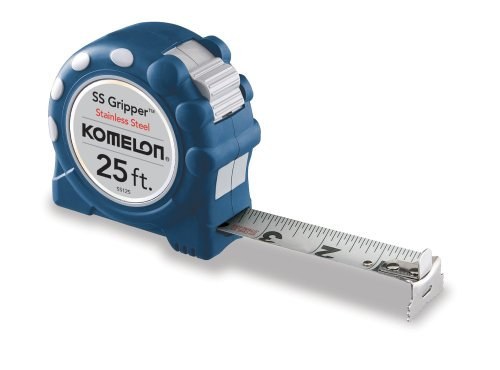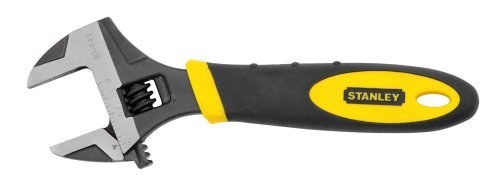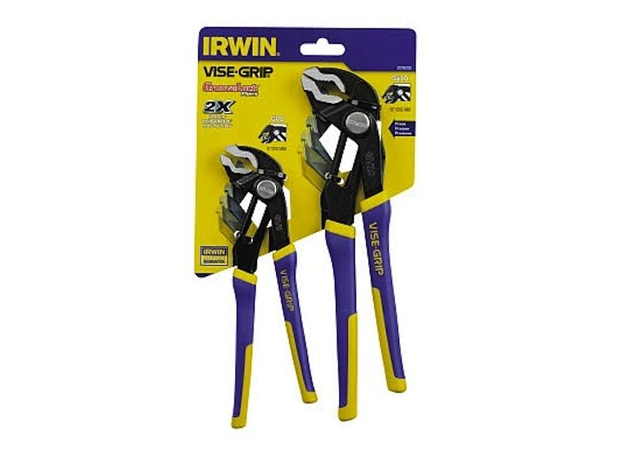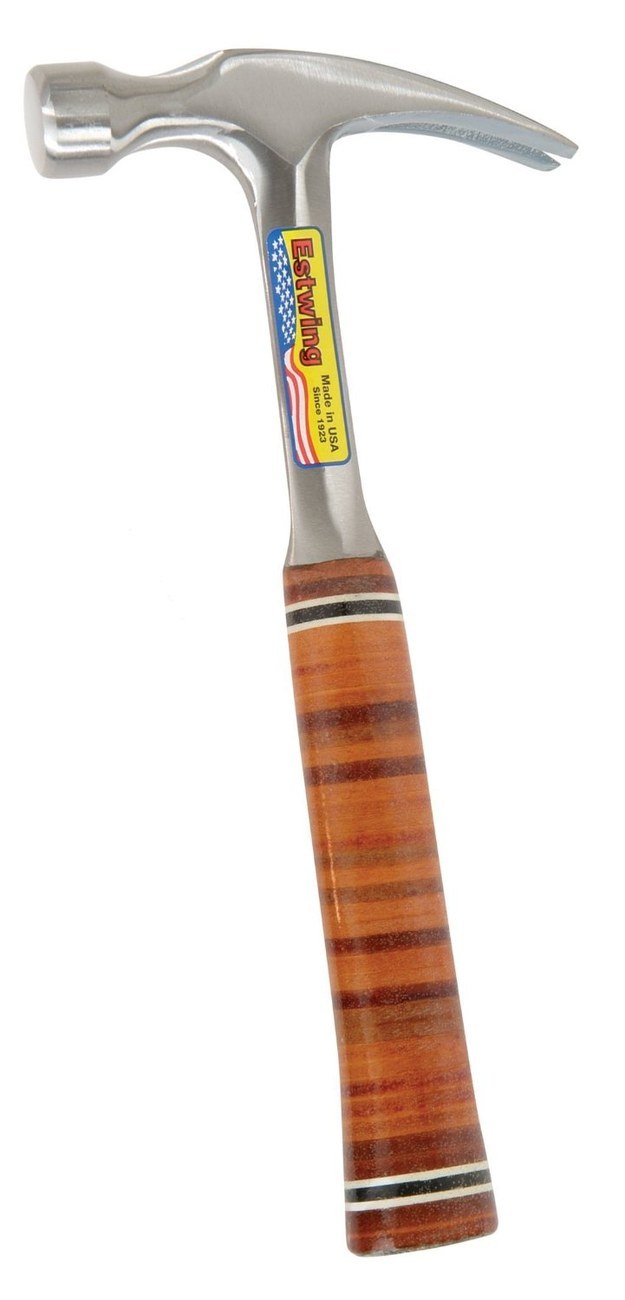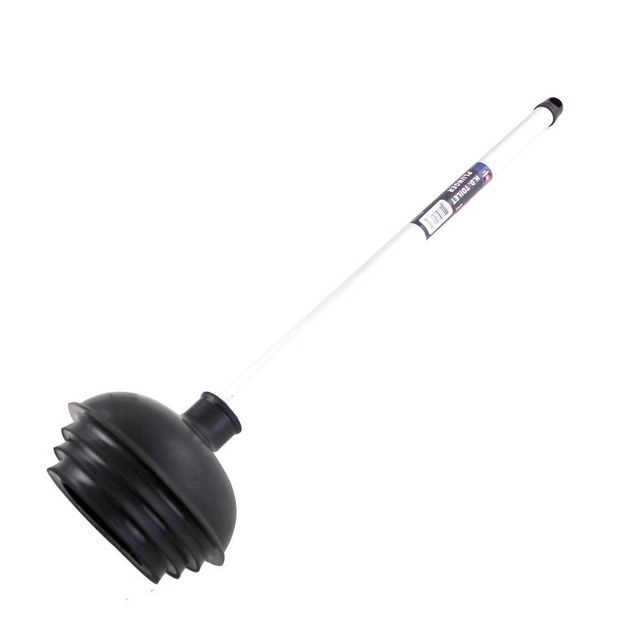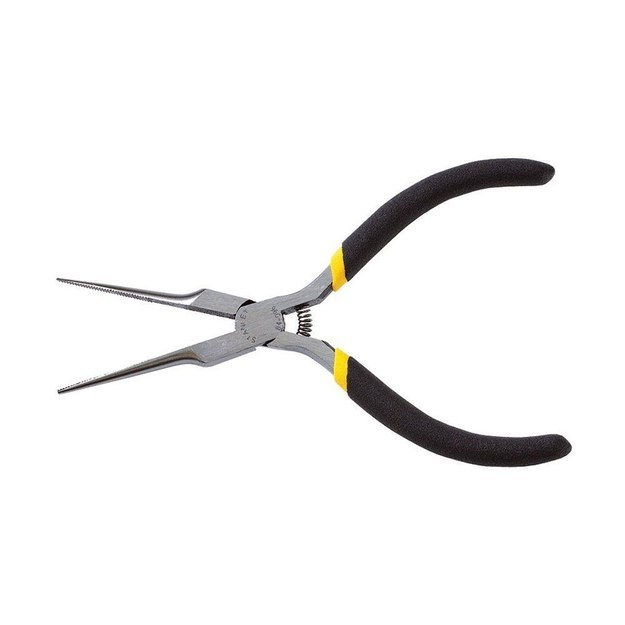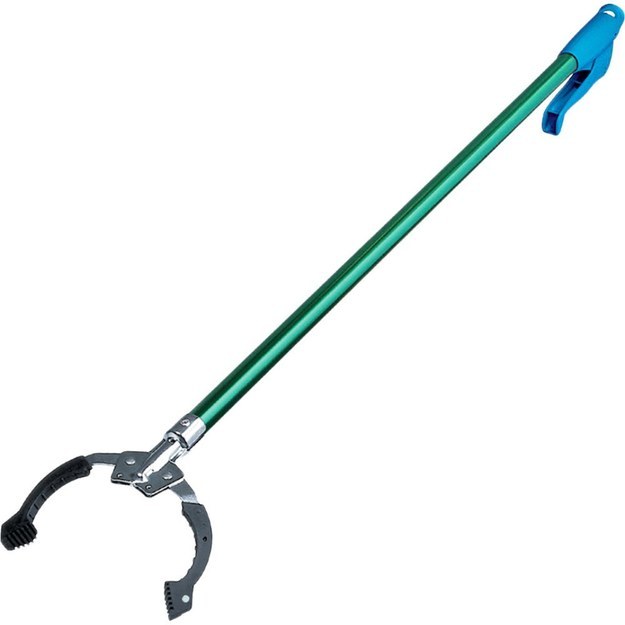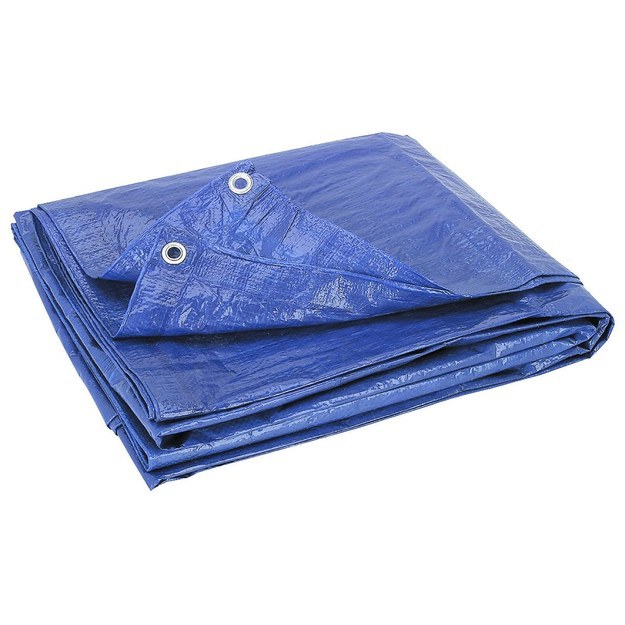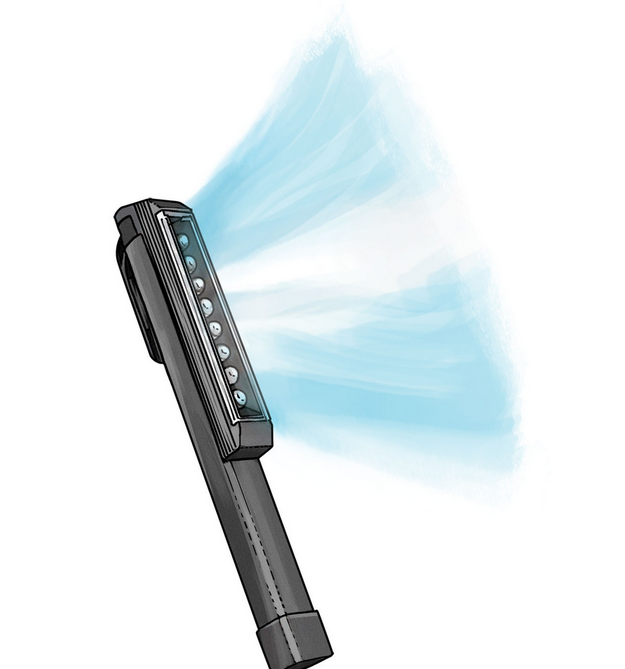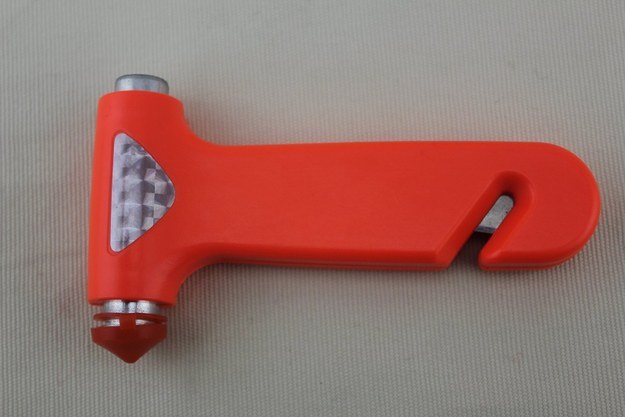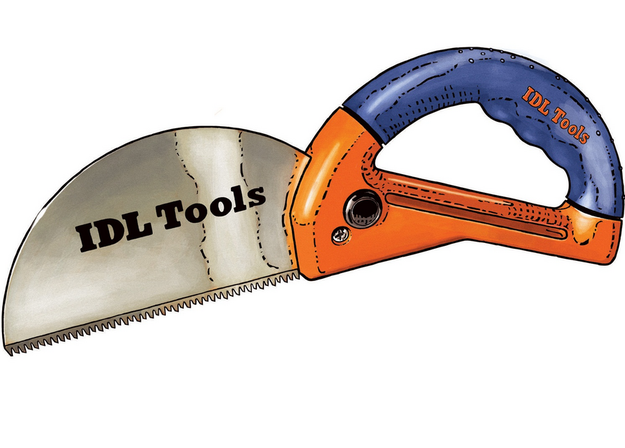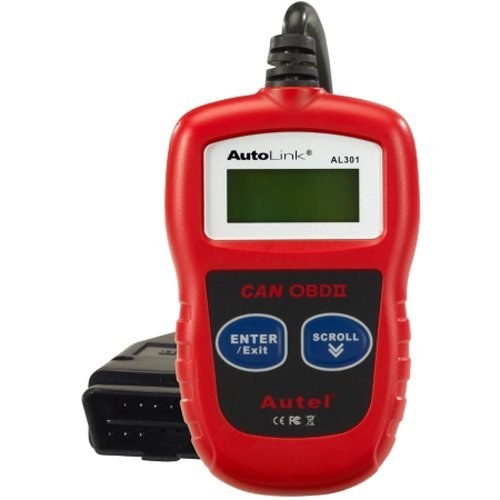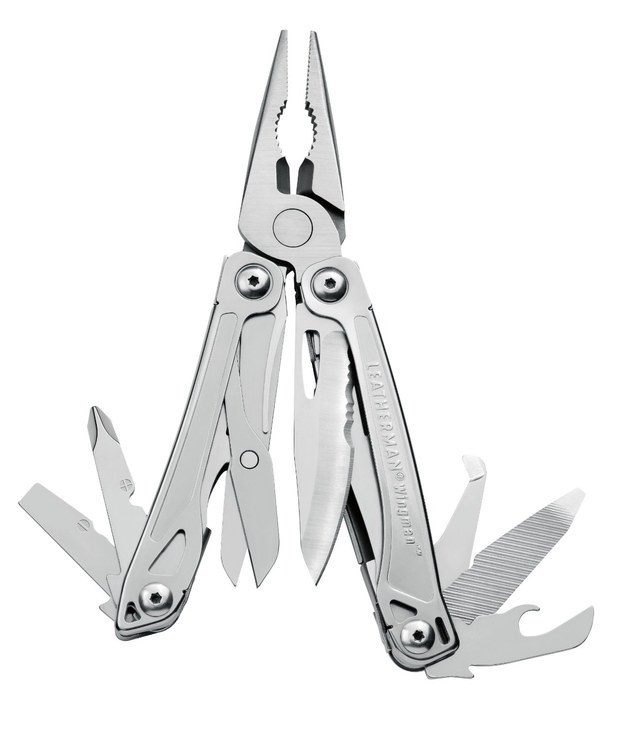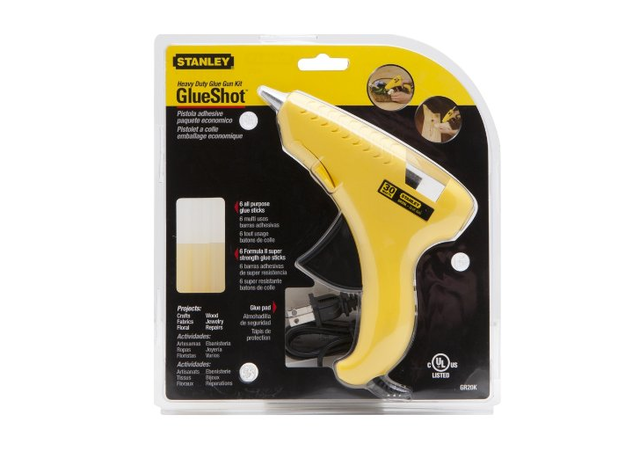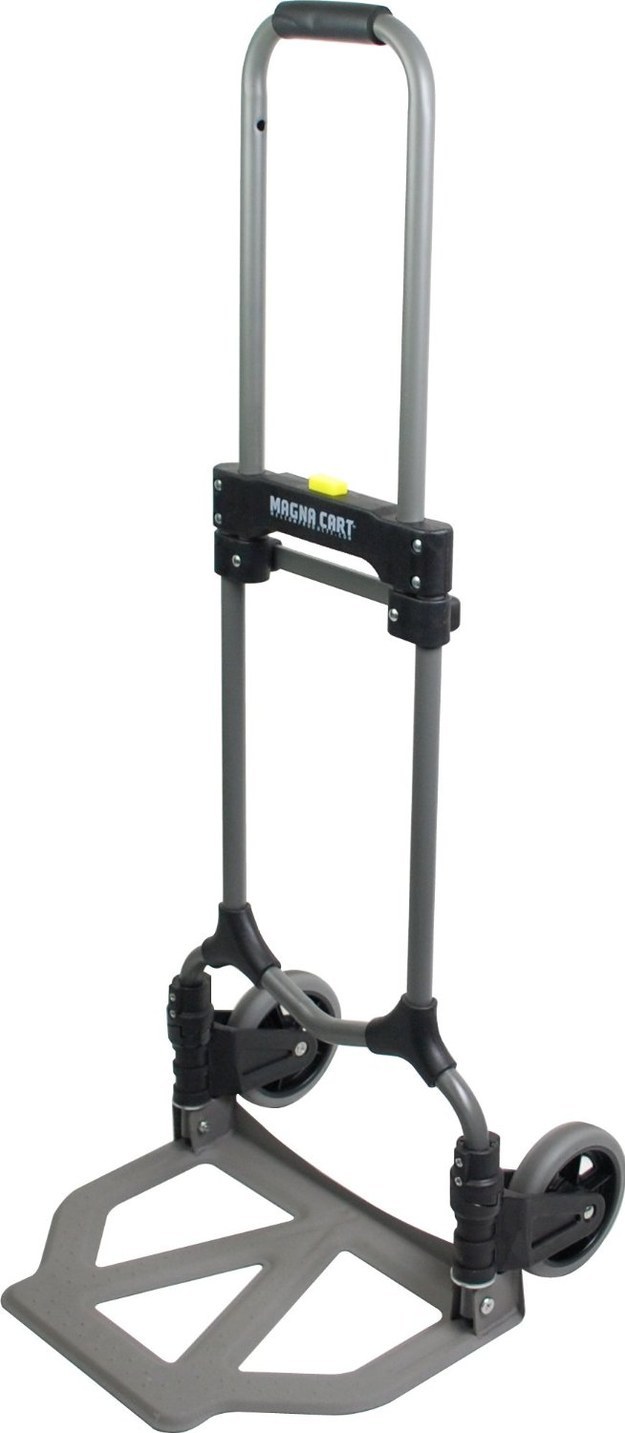It's not in every case simple to choose whether to do it without anyone's help (DIY) or contract a contractual worker. In any case, one favorable position is clear: DIY home fixes can spare you a pack. You can utilize DIY traps to get a good deal on home enriching, house upkeep, vehicle fixes, finishing, and that's only the tip of the iceberg.
One of the keys to getting a good deal on DIY is to have an all around loaded tool stash primed and ready. In any case, you would prefer not to go out and purchase up each apparatus at the handyman shop just on the opportunity that you may require it. It bodes well to spend your device spending plan on a couple of great apparatuses that you'll use again and again.
Luckily, you needn't bother with that numerous apparatuses to be set up for home crises. Around twelve devices ought to be sufficient to see you through most fundamental fixes.
An Essential DIY Tool compartment
As indicated by specialists, there are sure instruments each DIYer needs. These fundamental apparatuses –, for example, a sledge, a flexible wrench, and a screwdriver set – come up over and over in home fix occupations. No tool stash is finished without them.
1. Sledge
Utilizations: A nail is no utilization without a mallet. Most sledges have a hook inverse the head, so you can utilize one end to drive in nails and the other to pry them out. You can likewise utilize a mallet for any activity that requires a decent whack, for example, separating a mortar divider or striking confining wood into spot.
What to Purchase: Carpentry specialists state the most flexible sort of mallet is a 16-ounce hammer with a smooth head and a bended hook. This size can be utilized for both fragile employments, such as hanging pictures, and all the more rock solid ones, such as fixing a deck. The bended paw makes pulling nails less demanding.
An essential choice with a wooden or fiberglass handle, for example, this BASTEX hammer, costs under $15. Nonetheless, for an additional $10 or somewhere in the vicinity, you can get a metal-dealt with sledge that is every one of the one piece, from head to base. Estwig's B3-3LB model is profoundly evaluated. Specialists state this sort is almost indestructible. Since you'll be utilizing this apparatus a great deal, search for one that feels good to grasp and very much adjusted when you swing it.
How It Can Spare You Cash: A great sledge makes it conceivable to purchase cheap furniture that is prepared to-gather, instead of springing for pricier pieces in their completed structure. It additionally spares you cash on home improvement ventures. Regardless of whether you need to enlist a temporary worker for a large portion of the work, you can do your own destruction with your trusty mallet. Mallets even prove to be useful for employments that aren't home-related, for example, adding new heel tips to shoes.
2. Screwdrivers
Utilizations: various things in your house are appended with screws. They hold together furnishings and lights and associate bureau entryways, outlet spreads, and doorknobs. So whenever you have to fix any of these things, you'll need a screwdriver to evacuate the screws and set them back once more. Specialists state this is the one device in your tool kit you'll go after frequently.
What to Purchase: There are two fundamental kinds of screws: level head, with a solitary space in the best, and Philips, with a little cross in the center. To deal with each sort, you need both a Philips and a level head screwdriver. In a perfect world, you ought to have a few of each so you can manage screws of various sizes. You can get an essential screwdriver set, with an assortment of sizes and types, for $10 to $15. Stanley's 10-piece screwdriver set is a lot.
In the event that you need to spare a little space in your tool kit, you can purchase a solitary multi-bit screwdriver. These apparatuses have only one handle with a collection of bits that you can swap in as required. A straightforward six-in-one screwdriver, with two Philips, two level head, and two nut-driving closures, can cost as meager as $5. Stanley's across the board screwdriver possesses all the necessary qualities and the sticker price.
Regardless of whether you settle on one screwdriver or a few, search for ones that are strong and agreeable to hold. In case you will utilize it a great deal, it merits springing for a tightening screwdriver. These have exceptional worked in apparatuses that let you fix and slacken screws a lot quicker. For $20 to $30, you can get a well-made tightening screwdriver with every one of the bits you'll ever require. Skilled worker's tightening attractive screwdriver accompanies a lifetime guarantee.
How It Can Spare You Cash: Like a sledge, a screwdriver is an unquestionable requirement for amassing level pack furniture. It's additionally crucial for different ventures around the house. For example, supplanting old electrical outlets is a truly basic activity, yet there's no real way to do it without a screwdriver. Indeed, even an extravagant $30 tightening screwdriver will cost you significantly not as much as calling a circuit tester.
3. Flexible Wrench
Utilizations: Things not appended with nails or screws are normally associated with stray pieces. To fix and release those jolts, you need a wrench. A flexible wrench carries out the responsibility best since it can adjust its size to get a handle on onto nuts of a wide range of sizes.
What to Get: A few specialists recommend purchasing two wrenches of various lengths. A little six-inch wrench can fit into tight spaces, while a more extended 10-inch wrench gives you more influence for relaxing tight jolts. A two-piece wrench set costs under $20. Indeed, even WORKPRO's three-piece set is just about $20.
Others state you can manage with only one eight-inch wrench, as long as it's a decent one. Search for one with a wide jaw opening and an agreeable handle. It ought to likewise be anything but difficult to modify and remain put once you have it set to the size you need. You can get a wrench with every one of these highlights for $25. Klein Instruments has a great explored flexible 8-inch wrench for around that cost.
How It Can Spare You Cash: This device can spare you cash on an enormous assortment of employments. First of all, you can utilize it to do straightforward pipes fixes at home, as opposed to paying a handyman. You can likewise utilize it to fix a bike as opposed to taking it to the shop. At long last, a wrench is helpful for a wide range of huge scale building occupations, from decks to play area hardware.
close-up of a flexible wrench with red handle
4. Utility Blade
Utilizations: Many eliminating positions, for example, opening boxes or cutting backdrop, are dubious to do with scissors. For these, the best device is a sharp blade. An utility blade is the most secure kind. The edge is put away inside the handle where it can't cut you unintentionally and you can broaden it as required. An utility blade is likewise helpful for shaving wood, stamping indents on sheets, and when absolutely necessary, honing a pencil.
What to Purchase: A great utility blade has a safe and agreeable handle. Preferably, it ought to likewise have worked away for additional cutting edges. That way, you're bound to change the edge when required as opposed to furrowing alongside a dull edge, which is a decent method to cut yourself.
You can get a blade with every one of these highlights for around $10. Stanley makes a strong essential utility blade. For an additional $5 or somewhere in the vicinity, you can get one that opens and closes with one hand and bolts into various positions. This spares time when you have to hold something with one hand and cut it with the other. A belt snare for conveying is another pleasant component. Gerber's EAB Light Folding knife is an adaptable alternative.
How It Can Spare You Cash: An utility blade is a fundamental device for any activity that includes cutting, for example, introducing rug, backdrop, or vinyl flooring. Having a decent blade primed and ready makes it simple to carry out these responsibilities yourself as opposed to bringing in the geniuses.
5. Putty Blade
Utilizations: A putty blade, otherwise called a scrubber, is helpful for an assortment of occupations. You can utilize it to apply and smooth down wood putty or spackle, rub off stripping paint or backdrop, or evacuate caulk around a tub or a window. The thin cutting edge is likewise helpful for prying open a container of putty before applying it. A short time later, you can utilize the handle end to blast the top shut once more.
What to Purchase: A putty blade with a cutting edge 1.5 crawls crosswise over is the most helpful size. It's sufficiently tight to fit into corners, however sufficiently wide to fill huge breaks rapidly.
The best putty blades have edges of adaptable hardened steel, which is anything but difficult to clean and won't rust. The handle ought to be agreeable and sufficiently long to give you adequate influence. You can get this without paying more than $6 or $7. Warner's ProGrip Full Flex Putty Blade is a reasonable, moderate alternative.
How It Can Spare You Cash: Your putty blade can assist you with a wide range of employments as opposed to turning them over to temporary workers. You can utilize it to fix dividers or "mud" the holes in crisply introduced drywall – an expensive activity to have done expertly. A putty blade is additionally fundamental for re-coating windows.
6. Handsaw
Uses: A handsaw is simply a toothed cutting blade attached to a handle. It’s useful for making quick cuts in wood because it’s much faster and simpler to use than a power saw. It’s also ideal for building a treehouse since it’s not easy to haul a power saw up a ladder.
What to Buy: Saws come in three basic types. The traditional western saw has a two-foot blade that tapers from base to tip and cuts as you push forward through the board. A Japanese pull saw, by contrast, has a straight blade that cuts when you pull it back through the wood. Pruning saws also cut on the pull stroke, but they have a narrow blade that folds up for storage.
In tests at The Sweethome, pull saws delivered the fastest and cleanest cuts. A good one costs around $30, while a western saw costs only $10 to $15. However, spending the extra money will save you a lot of time on cutting jobs. The Tajima MG-300FB Magnum Pull Saw is a high-quality choice.
Another difference between saws is the number of teeth per inch. Six to eight teeth per inch work best for rip cuts, made with the grain of the wood. For cross cuts made against the grain, eight to 12 teeth per inch is better. So, an eight-point saw is a good compromise for making both kinds of cuts.
A final feature to look for is a replaceable blade. That way, you don’t have to replace the whole saw if the blade gets damaged. Tajima’s JPR-265 11-inch model has a replaceable blade.
How It Can Save You Money: Your handsaw can save you money on all kinds of small-scale building and repair jobs. You can use it to replace a board on your deck or a piece of damaged trim. Cutting out these boards yourself and replacing them is much cheaper than hiring a carpenter, and faster too.
7. Pliers
Uses: Often, when you’re doing a DIY job, you need to grasp onto something so you can pull or turn it. You can try grabbing it with your fingers, but sometimes they’re not strong enough to apply the force you need.
That’s where a pair of pliers comes in handy. It has metal teeth on one end to grip onto an object, and long handles on the other end to give you leverage as you pull, bend, or twist it. You can use pliers for loosening nuts, pulling out nails, straightening bent power plugs, removing plumbing fixtures, and pinching wires together to splice them.
What to Buy: There are several types of pliers, each designed for different kinds of jobs. You can buy a basic set of pliers with three or four different pairs for around $40. Craftsman’s 5-piece pliers set should cover you for most jobs. If you want high-quality tools, it makes more sense to pick out one or two pairs of pliers you’ll use often and invest in good ones.
One type many experts recommend for DIY work is locking pliers, which are sometimes called by the brand name Vise-Grips. These have adjustable jaws that you can resize to fit a nut or other fixture. You can then press a lever to lock the jaws into place on the object, leaving both your hands free to apply pressure to the handle. This makes them ideal for jobs that require a lot of force, such as removing a rusted bolt or a stripped screw.
A good pair of locking pliers should have a firm grasp and comfortable handles. They should also be easy to lock, unlock, and adjust for size. A high-quality pair costs $20 to $25. IRWIN Tools, the creator of Vise-Grips, have a 3-piece set that should last you years.
Needle-nose pliers also show up on many experts’ must-have lists. These pliers have long, narrow tips that can get into tight spaces. They’re crucial for electrical work, but they’re also perfect for any time your fingers are too big or too weak to get a good grip. You can use them to repair jewelry, fish objects out of the drain, or hold a nail in place while hammering so you don’t risk your fingers.
The best needle-nose pliers are roughly eight inches long. Like other tools, they need comfortable handles, as well as smoothly aligned jaws that don’t wobble or twist. A good pair, such as Irwin Tools’ Long Nose Pliers, costs between $15 and $30.
How It Can Save You Money: With both locking pliers and needle-nose pliers in your tool kit, you’re equipped to handle a variety of jobs. You can work with hefty pipes and delicate wiring with equal ease. These two tools can save you numerous calls to the plumber or the electrician.
8. Tape Measure
Uses: In DIY jobs, accurate measurements are a must. You need a good tape measure to check the size of a pipe, hang a picture in the correct position, find the area of a wall to be painted, or measure the space where a new appliance needs to fit. Builder Doug Mahoney, writing for The Sweethome, says a tape measure is “the single most-used tool on a job site.”
What to Buy: For DIY jobs, you need a locking and retracting tape measure. When you put one end of it in place, you can feed out the tape steadily without having to hold it down, and it will stay fed out while you jot down measurements. When finished, you should be able to retract the tape at the touch of a button.
The cheapest retracting tape measures are 12 feet long and cost about $5. However, experts say it’s worth paying $10 to $20 for a sturdy 25-foot tape measure. This size is large enough to handle bigger DIY jobs, such as measuring large rooms. Komelon makes a well-reviewed self-locking model.
Durability is also important. The case and blade should both be sturdy, and the locking lever should be easy to use with one hand. Also, the tang (the metal hook on the end of the tape) should be large enough to grip firmly wherever you put it, but not so big that it gets caught on nearby things. A colorful case is a nice plus as it makes the tool easier to find in your tool box.
How It Can Save You Money: A good tape measure is a must for any home remodeling project. For instance, when you’re redoing a kitchen, you need to check the size of all kinds of things: counters, cabinets, plumbing fixtures, and the distance between electrical outlets. If you can’t handle this on your own, you’ll have to leave all remodeling work to the pros.
tape measure on top of wooden table diy
9. Flashlight
Uses: You can’t always count on having good lighting for DIY jobs. Often, you have to work in a dimly lit basement or peer into dark crevasses. Also, you sometimes need to find your way around when the power is out. In cases like these, you need a flashlight to see what you’re doing.
What to Buy: The only thing a flashlight has to do is provide enough light to see. Even the cheapest models at your local drugstore will work in a pinch. However, if you pay a little extra for a flashlight with LED bulbs, your batteries will last a lot longer. For about $25, you can get a bright LED flashlight made of sturdy aluminum, complete with batteries. Provset makes a trusty 1200 lumen model.
There are a couple of other features that can make a flashlight easier to use. For instance, around $40 will buy you an electric headlamp, which mounts on your forehead and leaves both hands free to work. Black Diamond’s Storm headlamp is the industry standard.
Another useful alternative is a $40 rechargeable flashlight. If you leave it plugged in at all times, it will always be fully charged and ready to go when the power goes out. This means you’ll never have to worry about keeping spare batteries on hand. Black Diamond’s ReVolt model is a reliable option.
How It Can Save You Money: A good flashlight lets you work in dark spaces, like the cabinet under the sink or the basement breaker box. That makes it easy to check out a problem up close and see if it’s one you can handle yourself. You’ll never have to call in a pro for a simple problem just because you couldn’t see to fix it.
10. Equipment
Utilizations: Similarly as a nail is nothing worth mentioning without a sledge, a mallet is pointless without nails. In the event that you keep an assortment of nails and screws available, you won't need to dash out to the tool shop each time something in your home needs a clasp.
What to Purchase: Nails arrive in a wide scope of sizes, from small completing nails to spikes a few inches in length. Nail sizes are frequently recorded in "pennies," shortened as "d": 8d, 10d, etc. In any case, a penny isn't a genuine unit of length. Rather, the term alludes to what nails of various sizes used to cost.
Sinks fluctuate estimate, however in sort also. Some are intended for securing wood, others for joining things to drywall. They can likewise be made of various materials.
In case you're fabricating a toolbox starting with no outside help, simply purchase a bundled grouping of nails and screws. These frequently accompany other convenient bits of equipment also, for example, picture snares or divider stays. GS Instrument makes an ease 347-piece equipment set. Be that as it may, on the off chance that you need to manufacture your own accumulation, here are a couple of sorts to include:
Completing Nails. Little 3d nails, 1.25 crawls long, are convenient for little fixes. You can likewise utilize them to hang pictures.
Vinyl Sinkers. These have a vinyl covering that makes them less demanding to pound in and harder to haul out. Substantial 16d vinyl sinkers are useful for huge development employments that you need to hold together. Medium-sized 8d sinkers are useful for littler occupations.
Electrifies Nails. These nails have a rust proof completion that makes them appropriate for open air occupations. You can utilize 8d electrifies nails for little open air building ventures and 16d nails for deck fixes.
Drywall Screws. These screws are covered with dark phosphate. They're intended for connecting drywall to studs, however you can utilize them for about any indoor activity. Specialists propose keeping a few screw sizes available: 0.75-inch, 1.25-inch, 2-inch, and 3-inch.
Open air Screws. You additionally need rust proof wood screws for structure decks and other open air ventures. These can be covered or made of hardened steel. Helpful sizes incorporate 1.25 inches, 1.75 inches, 2.5 inches, and 3 inches.
How It Can Spare You Cash: With a lot of nails and screws to work with, you can deal with a wide range of fixes as opposed to bringing in a professional. For example, you can supplant a harmed fix of drywall or a missing board in your deck.
11. Tape
Utilizations: A few homes are essentially held together with channel tape. While it is anything but a smart thought to depend on it for all your fix occupations, there's no denying it proves to be useful for a wide range of convenient solutions. Notwithstanding this universally handy tape, there are different sorts of extraordinary tape that are imperative for explicit DIY employments.
What to Purchase: There are four fundamental sorts of tape you need in your DIY pack:
Channel Tape. This additional sticky tape has a thick, woven sponsorship and is anything but difficult to tear to the length you need. You can utilize it for anything from fixing a torn covering to re-connecting the handle to a broken container. The one thing it can't fix, incidentally, is conduits, since it doesn't stand up well to warm. Most channel tape is silver, however it likewise comes in splendid hues that are anything but difficult to spot. It costs around $4 per roll. Duck Brand's Conduit Tape is an amazing alternative.
Painter's Tape. Delicately sticky painter's tape is anything but difficult to expel from a surface without harming it. Its basic role is to cover moldings or the edges of roofs before you paint a divider, so paint doesn't overflow. You can likewise apply it to channels to shield your forceps' teeth from scratching them. A move of inch-wide painter's tape costs about $5. Scotch safe-discharge tape ought to work.
Electrical Tape. This tape is intended to protect electrical wires. It's normally made of vinyl, which extends well and gives great protection. You can utilize this tape to fix harmed wires or to cover pipes in winter, so they don't solidify. It comes in a few hues and expenses about $4 a roll. Tape Siblings' vinyl tape makes for a quality, ease choice.
Handyman's Tape. This is a slender, light tape made of PTFE (Teflon). When you apply it to the strung end of a pipe, it helps structure a more tightly seal. Different names for it incorporate Teflon tape and string fixing tape. It costs around a dollar a roll. TOOGOO offers PTFE tape at a reasonable cost.
How It Can Spare You Cash: Having tape in your toolbox spares you cash in a few different ways. For example, you can utilize pipe tape to fix a harmed tent as opposed to running out and burning through $50 on another one. Utilizing handyman's tape on channels can avoid expensive holes. Taping off your embellishment with painter's tape before painting shields it from harm, so you don't have to repaint later.
12. Toolbox
Uses: Once you’ve put together a comprehensive collection of tools, you need something to store them. A sturdy, well-organized toolbox will help you find your tools when you need them. It can also protect them from damage between uses.
What to Buy: A good toolbox should be large enough to hold all the tools you use regularly. It should also be sturdy and easy to carry. The lid and latch should be secure so the box doesn’t come open and spill your tools out.
Many toolboxes have compartments inside to sort your tools, so it’s easy to lay hands on the one you want. A lift-out tray for small items, such as hardware, is especially useful. However, having too many compartments limits the ways you can use the box.
Experts say a vertical tool bin is the easiest kind to use. It stores your tools vertically so you can easily see all of them. It’s also easier to carry than an unwieldy horizontal box.
You can get a sturdy “work box” with plenty of organizers inside for around $30. Stanley’s one-latch toolbox is a reliable choice. Or, you can buy a bucket liner tool organizer for around $25. This is a sleeve of sturdy canvas that fits over an inexpensive five-gallon bucket. Larger tools can go inside the bucket and smaller ones in pockets around the outside. Bucket Boss has a 10030 model that is proven and durable.
How It Can Save You Money: A good toolbox doesn’t necessarily save you money, but it does save you time. When you have a repair to do, it’s a big hassle to go fumbling through a cluttered bin looking for the right tool. A good toolbox keeps all your tools at hand so that you can get on with the job.
More Advanced Tools
With the tools listed above, you should be able to handle most basic repairs around your home. However, if you add a few extra tools to this basic kit, you can take on more advanced DIY projects and save even more money. For instance, you can build furniture from scratch that’s perfectly sized to fit your space – and cheaper than it would cost to buy ready-made.
13. Drill
An electric drill is possibly the most useful power tool you can own. It’s really two tools in one: a drill and a power driver. You can use the drill function to make holes of all sizes. For instance, you can drill pilot holes for starting screws or larger holes for running wires through the back of a TV cabinet.
Replace the drill bit with a screwdriver bit, and you can drive screws much faster than you could with any hand-held screwdriver. This is useful when you have to put in a lot of screws in a short time. You’ll reach for your drill/driver when you need to replace a light fixture, repair drywall, or build anything from a bookcase to a doghouse.
Most experts say cordless drills are most useful. They’re not as powerful as their corded cousins, but they’re a lot easier to use. For example, if you’re building a treehouse, it’s much easier to haul your drill up the tree without dragging a long extension cord behind it.
A 12-volt cordless drill with lithium-ion batteries is most versatile. It’s small and light, but powerful enough for most DIY tasks. However, if you do a lot of big jobs, such as building a deck, it’s worth upgrading to larger 18-volt drill. It has more power and can run longer on a battery charge. Black+Decker even makes a reliable 20-volt MAX model that work for most jobs.
Aside from power, the best drill/driver should have a sturdy build, a comfortable handle, and a good warranty. You can buy a drill with all these features for $75 to $100. This includes two batteries and a charger, so you can swap in a fresh battery if you run out of juice.
14. Level
Suppose you’re trying to build a bookcase. You need to make sure the shelves are level so the books don’t slide off. The easiest way to check this is to use a level.
A bubble level is a small, flat tool that has a tiny, clear vial of liquid built into the center. This vial is only partly full, leaving a bubble of air at the top. When you place the level flat upon a surface, the bubble rises to the top. If it ends up centered between two lines marked on the glass, that tells you the surface is level.
Most levels also contain a vertical vial. That way, you can use them to see whether vertical lines are accurate. With these two vials, you can use your level to make sure any carpentry project comes out straight and even. You can also use it for hanging pictures, installing cabinets, or laying a patio.
You can buy a mini-level with two vials of liquid for less than $10. A vial this size fits neatly in a toolbox. For bigger jobs, you can get a four-foot level to test longer surfaces. A metal level, which is sturdier than a plastic one, costs about $25. Stanley’s 48-inch level should work for a variety of jobs.
For hardcore DIYers, there’s a more advanced tool called a laser level. It’s like a laser pointer that projects level lines with the touch of a button. These can cost anywhere from $20 to $100. Qooltek’s multi-purpose laser level is a bargain.
15. Stud Finder
When you’re hanging cabinets or other heavy objects, you need to make sure they stay put. If you just hang them on a piece of drywall with nothing behind it, they’ll pull right out, taking the wall with them. To mount them securely, you need to fasten them into the wooden wall studs.
The problem is, these studs are hidden behind the drywall, where you can’t see them. With practice, you can learn to knock on the wall and locate the stud by sound. However, it’s much easier to use a stud finder.
The simplest stud finders have a magnet inside. Instead of finding the stud itself, they locate the metal screws that secure the stud to the drywall. You can buy a sturdy stud finder with two built-in magnets for only $10. CH Robinson makes a basic, but reliable magnetic stud finder.
For $40 or $50, you can upgrade to an electronic stud finder. These battery-powered tools can show the exact location of the stud itself, not just the screws in it. This makes mapping out the positions of studs a much quicker job. Aom makes a four-in-one version that has sound alerts to help you avoid wires and metal.
The fanciest stud finders can also locate copper pipes and electrical wires. However, these tools cost at least $200. For most homeowners, they’re not worth the money.
16. Adjustable Pliers
Adjustable pliers – sometimes called by the brand name Channellocks – have extra-wide jaws. A 10-inch pair of pliers can open up to more than two inches. However, no matter how wide you set them, their jaws always remain parallel, giving them a firm grip on nuts, bolts, or pipes. They can grasp nearly anything and can bend and turn in many different ways.
These special pliers have a wide variety of uses. They’re ideal for tightening up plumbing, installing a new toilet, or adjusting garage doors. They can also loosen and tighten the small nuts on shut-off valves in places where a large pipe wrench might not fit.
Experts say 10-inch pliers are the most convenient size to own. They offer good leverage, but they’re small enough to be portable. The best ones have padded handles and v-shaped jaws that can easily grip round, flat, or hex-shaped objects.
Finally, the pliers should be easy to adjust. Many newer models can adjust with the push of a button, which makes them much simpler to use than older tongue-and-groove pliers. A good set of adjustable pliers with all these features, such as a V-Jaw set by IRWIN Tools, costs only $10 to $20.
17. Round Observed
A handsaw is fine for little eliminating positions, however on the off chance that you have to cut a lot of wood, a power saw will take the necessary steps a lot quicker. Experts state this apparatus is fundamental for enormous DIY occupations like including a deck, supplanting windows, or building racks.
The most fundamental, generally useful power saw is a roundabout saw. It has a round cutting edge that twists and powers its way through wood quick. Obviously, that quick turning edge is perilous, so you need to take additional consideration when utilizing it. In any case, for speed and adaptability, it's the best cutting apparatus you can purchase.
Roundabout saws come in two sorts. Sidewinders, which have the engine mounted as an afterthought, are lighter and less expensive – somewhere in the range of $100 and $150. Most clients discover this saw simple to move. SKILSAW makes a solid 15-amp alternative.
Worm-drive saws, with the engine behind the sharp edge, gauge more and cost more – from $140 to $200. In any case, they likewise pack more power and can slice through heavier materials. They're valuable for professionals, however for a run of the mill DIYer, they're simply an excessive amount of saw. In case regardless you're persuaded, look at SKILSAW's 15-amp word-drive demonstrate.
You can get cordless roundabout saws, yet most specialists state they can't coordinate the intensity of corded variants. Additionally, they can keep running temporarily before you have to energize the battery. At last, they typically cost more with the batteries and charger included into the cost. With everything taken into account, specialists state a corded sidewinder saw is best for generally property holders.
18. Wellbeing Rigging
Progressed DIY employments can be unsafe. Vapor, residue, and flying fragments would all be able to cause damage – particularly to your eyes. To secure yourself, you need a couple of basic bits of wellbeing gear.
Gloves
A solid pair of work gloves shields your hands from a wide range of harm. Well-made gloves stop chips and shield unpleasant blocks from scratching your skin. They additionally shield you from warmth, cold, and electric stun. They won't keep you from hitting your thumb with a mallet, however they'll in any event mollify the blow.
A decent pair of gloves gives security while as yet giving you a chance to keep a firm hold on your apparatuses. Hope to pay around $20 for a well-made pair. Ironclad's general utility gloves are a great choice. You ought to likewise keep some shoddy dispensable gloves close by for working with synthetic substances, for example, paint stripper.
Goggles
Wellbeing goggles shield your eyes from sawdust and flying flotsam and jetsam. They additionally shield you from sprinkling drops of stain or different synthetic concoctions at you. What's more, if a wire ever pops free and smacks you in the face, goggles can shield it from taking out your eye.
Goggles ought to be lightweight, strong, and secure. In the event that you wear glasses, the goggles should fit directly over them. They ought to likewise have cushioning for solace and enough ventilation to shield them from misting up. An essential pair costs around $5. Dewalt's enemy of haze goggles are all you need.
Cover
A residue cover shields you from breathing in residue or particles while you work. It's critical while sawing, sanding, or setting up fiberglass protection. Expendable residue veils are sold in multi-packs for about $1 each. You can get an ease pack of 50 from SAS Wellbeing.
For keeping out destructive vapors, you need a progressively detailed kind of cover called a respirator. These seal firmly around the edges to shut out exhaust. They have a worked in channel cartridge that ingests destructive gasses before they can achieve your lungs. Distinctive sorts of channels neutralize different synthetic concoctions, for example, acids or smelling salts.
You need a respirator at whatever point you're showering paint or different synthetic concoctions. They're additionally valuable for managing destructive substances like lead paint or form. A reusable respirator for DIY work costs around $25. MSA Wellbeing Works makes a very regarded respirator demonstrate.
Last Word
As you extend your DIY aptitudes, you can grow your toolbox too. For example, on the off chance that you intend to complete a ton of painting, you can add brushes and rollers to your workshop. For carpentry, you may require a miter saw, a square, a nailer, clasps, or an orbital sander. You could include a volt meter for electrical work and a stepping stool and additional lines to grow the range where you can work.
In any case, any instrument past the nuts and bolts is just worth purchasing in case you're going to utilize it routinely. For example, in the event that you have to tile a washroom, check whether you can obtain or lease a wet saw as opposed to getting one. It's not worth burning through cash on a device that will be utilized once and after that lounge around the shop gathering dust.
At long last, recall that it's insufficient simply have a decent arrangement of instruments. You additionally need to realize how to utilize them. So as you fabricate your toolbox, manufacture your DIY aptitudes too.
Essentials Tools Kit
Monday, 25 March 2019
Wednesday, 27 April 2016
Essential And Inexpensive Tools Everyone Should Own
1. Get ready for some intense grossness!
When you stick a Zip-it down your drain to get rid of a clog, you never know what might come up.
Just kidding, you do know: probably some hair and other assorted sludge.
Let the Zip-it venture down into your pipes for you (just like the basilisk at Hogwarts) and soon all the clogs will be gone and your bath water will drain quickly once more.
2. An extension ladder? Too tall. A step ladder? Too short. This is the Baby Bear of ladders, because it’s juuuuuuuuust right.
Plus it has two “landing areas” (wider steps so you won’t topple over) and it’s lightweight so you can easily haul it around wherever you may need it.
3. No, this isn’t Play-Doh, it’s Sugru Hacking Putty and it fixes EVERYTHING.
Well, maybe not everything, but it sure fixes a lot. The putty will stick to aluminum, steel, ceramic, glass, wood, and even some fabrics and plastics.
Desk drawer falling apart? Sugru. Laptop cord littered with cracks? Sugru. The thumb of your porcelain doll fell off? Sugru.
You get the idea.
4. This set may look extravagant, but it has every screwdriver and precision bit you could possibly need.
It doesn’t take up a lot of space and it doesn’t cost a lot of money, so buy it and you’ll never encounter a screw you can’t remove again (even the itty bitty little ones you find in toys and other electronic devices).
Still think it’s too much? Fine, go and check out this all-in-one screwdriver and thisprecision screwdriver set instead.
5. Anyone who drives should invest in a portable jump starter to keep in the trunk of their car.
Having a dead battery is miserable enough; who wants to add to the misery by waiting around for AAA (or wandering around the parking lot, searching for someone who isn’t sketchy to ask for a jump)?
This device will allow you to get your car started again ALL ON YOUR OWN in *most* dead battery situations. It’s also impossible to use incorrectly (an alarm will go off if you don’t hook the clamps to the right spots).
6. If you live somewhere that gets a lot of snow (like, say… Boston), you should purchase a lightweight shovel that’s easy on your back.
This one is as strong as it is light: your dream shovel.
7. An X-Acto Knife set (for when you need to be precise with your cutting.
“BE CAREFUL, PLEASE!” - your fingertip.
8. Snips (for when you need to be less precise with your cutting).
“BE CAREFUL, PLEASE!” - your entire finger.
9. Wrap-Fix Tape is incredibly useful to keep around the house for plumbing emergencies.
Have a leaky shower head? Wrap some of this watertight tape around it until you want to deal with replacing it. Or just leave the tape there—it works REALLY well (unless you have a more high-pressure problem, then you need to dial up your favorite plumber).
Another awesome option: X-Treme Tape (you can attach it to mufflers and other things that get hot).
11. As useful as buckets may be, they sure take up a lot of space… unless they’re collapsible (like this guy).
Wash whatever foul surface you may have, then fold the bucket up, and stick it under your sink until you need it again.
12. This is a no-frills tape measure that will do its job well (and never rust: it’s made from stainless steel).
Don’t buy a couch only to find out it won’t even fit into your living room! Measure first. Always measure first.
13. Here’s a compact wrench to keep around the house for general repair tasks (plumbing, car stuff, etc.).
Keep one in your bag if you ride a bike and need to adjust things on the go.
14. These pliers will help you get a grip on even the most slippery of surfaces.
You can adjust the gap to a variety of widths (depending on what you’re working on).
15. Here’s a hammer. A classic, well-made hammer that will probably hang around on this earth longer than you do.
Enjoy your time with it.
16. A sleek, compact box-cutter with an easy to change blade.
This particular model is inexpensive enough to allow you to buy it in multiples: one for the kitchen, one for the garage, and so on.
17. This Micro Vacuum Attachment Kit is useful for anyone with electronic devices… so, everyone, pretty much.
Dust can cause computers, TVs, and other electronics to overheat. Most people use compressed air dusters to clean them out, but that just spreads the dust to other areas of the room! Absurd.
This kit is filled with micro attachments that allow your vacuum to clean even the smallest areas—sucking up the dust, not just displacing it.
Beyond electronics, the attachments are useful for cleaning bookshelves, vehicles, and “between” spaces (between your fridge and the wall, between your oven and the floor, etc.).
18. Save your breath! From tires to air mattresses, thisportable compressor will inflate them all.
It will also inflate things that are a little more fun (like bouncy houses and giant pool toys).
19. Plungers: most of the time they sit around collecting dust, but when you need one… you NEEDone.
The ridges on this model help it to get a tight seal on a variety of different drain sizes.
20. Drop something into a small space? Fingers too large to get it out? Needle nose pliers to the rescue!
They’ll also help you twist, cut, and grip.
21. The Nifty Nabber Pick-Up Tool = a short person’s new best friend.
Especially if you live alone.
You may feel silly at first, but you’ll be celebrating once you discover how easy it makes getting things off shelves (no matter how big or how small—it can pick up pennies or something that weighs 8 pounds).
22. Start a collection of bungee cords in various sizes.
23. For $4.99, why WOULDN’T you buy a tarp? You never know when you may need to protect something from the rain.
This one is weather-resistant and won’t crack (no matter how freezing it may get outside).
24. This flashlight may be small, but it provides an enormous amount of light.
Beyond being bright and conveniently small, it’s also water-resistant, shock-proof, and equipped with a magnetic clip (so you can hook it to something to free up your hands).
25. The #1 tool you should keep in your car, thisemergency escape device can cut through a seat belt and break a window.
Here’s hoping you never have to use it.
26. A saw is undoubtedly a tool kit necessity, but the average person will never need an especially large one: the CircSaw Folding HandSaw is a perfect, compact choice.
The ability to fold it up when it’s not in use protects the teeth (as well as your precious fingers).
27. Bish’s Original Tear Mender and Sticky Ass Gluewill help you with all your adhesive needs.
Can’t sew? Bish’s Original Tear Mender will fix any fabric or leather rips, while the “stubbornly strong” Sticky Ass Glue will allow you to reattach things made from almost any other material: wood, metal, stone, fiberglass, plastic, concrete… the list goes on and on.
28. “Oh shit, the check engine light just came on”: with this gadget, you’ll be able to figure out exactly what the problem is.
In most cases, at least.
Plug it into your car and it will allow you to read diagnostic trouble codes, giving you an idea of how bad (or not-so-bad) the situation is.
29. You’ve probably received a Leatherman Multi-Toolin your Christmas stocking at one point or another, but if you don’t already have one, go get one. Now.
If you want a multi-tool that’s even more compact, check out the PocketMonkey.
30. The glue gun is a constant companion for all crafters, but everyone should have one to call their own.
You’ll eventually burn your fingers…there’s just no getting around it. Swear loudly and move on.
31. Use the Magna Cart Hand Truck whenever you have boxes that need moving, and when you’re done you can just fold it up and tuck it away.
Your weary muscles will thank you for the help when the time comes to transport things.
Subscribe to:
Posts (Atom)
